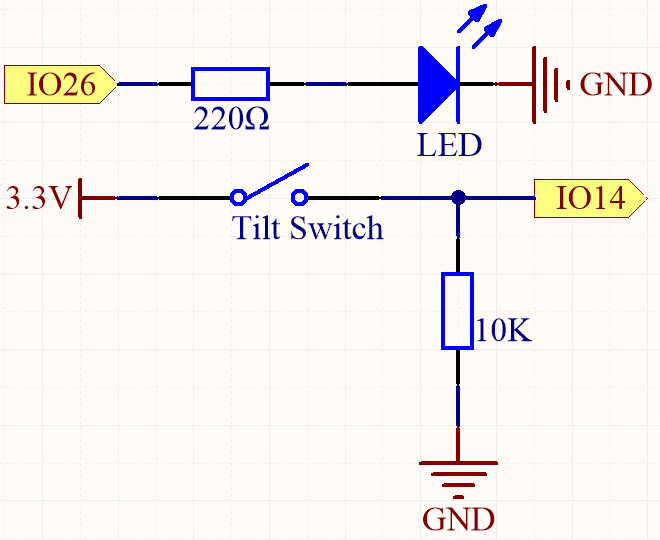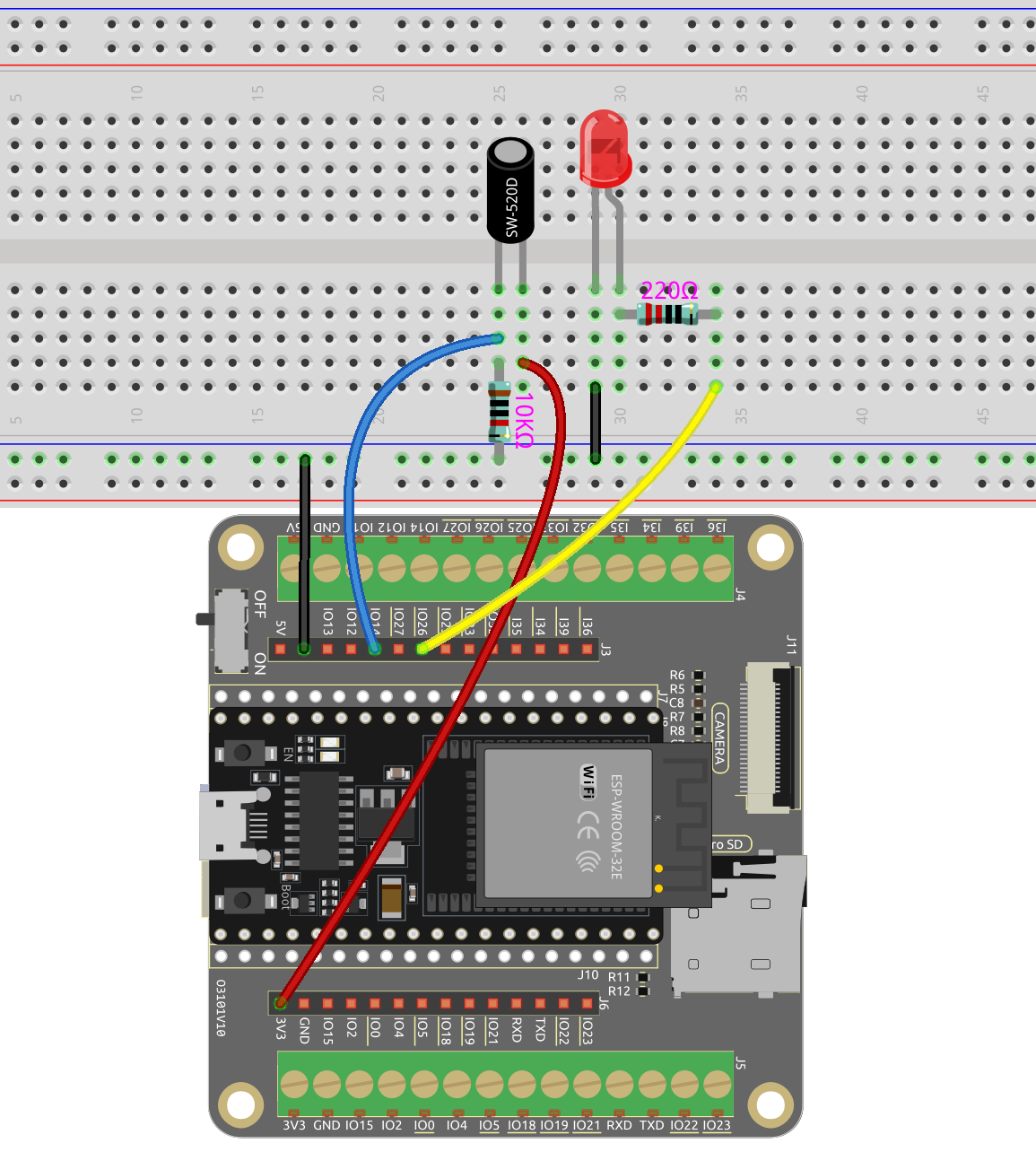5.2 Tilt It!¶
The tilt switch is a simple yet effective 2-pin device that contains a metal ball in its center. When the switch is in an upright position, the two pins are electrically connected, allowing current to flow through. However, when the switch is tilted or tilted at a certain angle, the metal ball moves and breaks the electrical connection between the pins.
In this project, we will utilize the tilt switch to control the illumination of an LED. By positioning the switch in a way that triggers the tilt action, we can toggle the LED on and off based on the switch’s orientation.
Required Components
In this project, we need the following components.
It’s definitely convenient to buy a whole kit, here’s the link:
Name |
ITEMS IN THIS KIT |
LINK |
|---|---|---|
ESP32 Starter Kit |
320+ |
You can also buy them separately from the links below.
COMPONENT INTRODUCTION |
PURCHASE LINK |
|---|---|
- |
|
- |
Available Pins
Available Pins
Here is a list of available pins on the ESP32 board for this project.
For Input
IO14, IO25, I35, I34, I39, I36, IO18, IO19, IO21, IO22, IO23
For Output
IO13, IO12, IO14, IO27, IO26, IO25, IO33, IO32, IO15, IO2, IO0, IO4, IO5, IO18, IO19, IO21, IO22, IO23
Conditional Usage Pins (Input)
The following pins have built-in pull-up or pull-down resistors, so external resistors are not required when using them as input pins:
Conditional Usage Pins
Description
IO13, IO15, IO2, IO4
Pulling up with a 47K resistor defaults the value to high.
IO27, IO26, IO33
Pulling up with a 4.7K resistor defaults the value to high.
IO32
Pulling down with a 1K resistor defaults the value to low.
Strapping Pins (Input)
Strapping pins are a special set of pins that are used to determine specific boot modes during device startup (i.e., power-on reset).
Strapping Pins
IO5, IO0, IO2, IO12, IO15
Generally, it is not recommended to use them as input pins. If you wish to use these pins, consider the potential impact on the booting process. For more details, please refer to the Strapping Pins section.
Schematic

When the tilt switch is in an upright position, IO14 will be set to high, resulting in the LED being lit. Conversely, when the tilt switch is tilted, IO14 will be set to low, causing the LED to turn off.
The purpose of the 10K resistor is to maintain a stable low state for IO14 when the tilt switch is in a tilted position.
Wiring

Code
Note
Open the
5.2_tilt_switch.pyfile located in theesp32-starter-kit-main\micropython\codespath, or copy and paste the code into Thonny. Then, click “Run Current Script” or press F5 to execute it.Make sure to select the “MicroPython (ESP32).COMxx” interpreter in the bottom right corner.
import machine
import time
switch = machine.Pin(14, machine.Pin.IN) # Tilt switch pin
led = machine.Pin(26, machine.Pin.OUT) # LED pin
while True:
# Check if the switch is tilted by reading its value
if switch.value() == 1:
# Turn on the LED by setting its value to 1
led.value(1)
else:
# Turn off the LED
led.value(0)
When the script is running, the LED will be turned on when the switch is upright, and turned off when the switch is tilted.